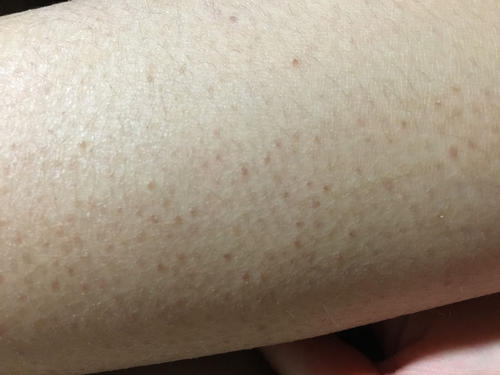

SCC,全名鳞状细胞癌,是表皮部位最高发的恶性肿瘤。
着实 ,关于SCC疾病的科普,早在一个月前就写好了。但思量 到是恶性肿瘤,发病概率相对较低,我们就“拖更”了。
然鹅,就在昨天,幺九最爱从心团五月天团宠猫、“最酷最特此外制作人”——菜头粿,离世了。
其多项病征,直指SCC。
▼陪同 了五月天18年的菜头粿原名蔡桃贵,“监制”了五月天3张专辑▼

在同所有五迷一起,纪念菜头粿带给我们的优美 回忆的同时...





“有猫,请务必把门关好,否则他们会出去吃人”图自@阿信画作
本期猫研所也想从一名动物医生角度和各人聊一聊,现在无论怎样 也无法忽视的这个:“中晚年 猫高发、占口腔恶性肿瘤65%、能短短几天就恶化夺去猫命”的疾病——鳞状细胞癌。

这一次,真的是只能“想”了图自@阿信
引发猫患SCC的因素有哪些?恶性肿瘤是否有治愈可能?能否预防或及早发现?
 是什么导致的发病?
是什么导致的发病?SCC,是表皮部位最高发的恶性肿瘤。
SCC在皮肤、口腔、食道等差异部位,都属于高发肿瘤:
在所有皮肤肿瘤中,SCC占比高达15%;
在口腔肿瘤中,单口腔SCC就占一半以上(约为65%)。
事实 其发病与哪些因素有关,哪些猫咪又更需引起重视呢?
1. 中晚年 、白毛等群体
针对SCC的临床医学统计发现:
▌中晚年 猫更高发
SCC常发生于中晚年 猫,发病年岁 普遍在10-12岁之间(但也确诊有5岁、7岁猫咪患病案例)。
▌白毛猫更高发
白猫的发病机率是其他颜色猫的13.4倍。

菜头粿也是一只有20岁高龄(18岁患病)的白猫。图自weibo
2.紫外线、吸烟情形 等外界因素
▌紫外线,易引发皮肤SCC
引起皮肤SCC的最常见缘故原由 是恒久袒露于紫外光(UV),特殊 是UVB。
由于 毛发是自然 的掩护屏障,以是 由UV引起的皮肤SCC险些只发生在头部,且毛发希罕 或者未着色的部位,如鼻梁、耳廓、眼睑。这也诠释 了,为何白猫具有极高的患病率。
▌吸烟情形 ,易引发口腔SCC
多种缘故原由 可能诱发口腔SCC。
自1971年~2016年的多项研究划分显示:猫咪处于吸烟情形 (2倍)、佩带 某些除蚤项圈(5.3倍)、携带猫乳头状瘤病毒-2型(FcaPV-2)等都可能增添 患SCC风险。
 怎样
及早发现和确诊?
怎样
及早发现和确诊?1. 不能忽视的症状
猫SCC最常发病部位为:鼻梁、耳廓和眼睑。

针对皮肤、口腔两大“重灾区”,给予更多关注:
▌皮肤SCC别“误诊”
猫咪皮肤SCC着实 通常易被主人发现,但主人可能把病变部位当成是不愈合的伤口,而“误诊”。
皮损形态差异很大,可能呈斑块状、乳头样、火山口样、真菌样,可能溃疡,也可能有痂皮。
因而发现猫咪存在皮肤问题且未获得改善,就需实时就医检查确诊。

猫头部皮肤各处泛起光化性角化、原位SCC和SCC
▌口腔SCC别“漏诊”
在发病早期,病变可能只体现为小的圆形隆起的肉肿样,或是伴有很少甚至没有增生的溃疡,容易被家长忽视。
有文献指出,口腔SCC最高发的部位是舌下、其次是上颌或下颌的黏膜。
因而一旦猫咪泛起厌食、嗜睡、体重减轻、毛发镌汰 、脱发和口臭,建议家长排查口腔黏膜病变。

发生于舌系带(lingual frenulum)的猫口腔SCC
2. 去医院应怎样 检查确诊
➤ 活组织检查是诊断的金尺度。
➤ 口腔SCC需要拍摄头部X片视察骨骼浸润情形 。(皮肤SCC的转移速率 相对较慢。)
➤ 辅助诊断还包罗:细胞学检查、淋投合穿刺、胸腔X线检查等。
另外有文献研究批注 ,由于可见显着 的异质性对比增强和骨消融 ,因而可拍CT来评估肿瘤的巨细和淋投合是否受累。

C为软组织团块

C为软组织团块并可见骨消融
 恶性肿瘤要怎样
治疗?
恶性肿瘤要怎样
治疗?
治疗要领枚举 说明
预后
➤ 皮肤SCC的预后,取决于肿瘤分期,而多与病变发生部位无关(虽然鼻部SCC常接纳手术切除)。
通常,最大直径<2cm,预后守旧或优异 ,少于一半会复发。
最大直径>5cm,患猫的中位生涯 期(MST)约53个月。
而50%分化不良的肿瘤患猫,会在12周内安乐死。
➤ 口腔SCC的预后通常很差,但易复发。
大部门口腔SCC患猫,会因肿瘤局部浸润,在6个月内殒命 。
较小的位于唇部的肿瘤,接纳手术治疗,可能有较长的生涯 期。
 家长能做什么
家长能做什么猫鳞状细胞癌是一种高发病率的恶性肿瘤,且发病由多因素影响。因而我们能做的是:
✔ 远离SCC的风险因素,到达预防
如:镌汰 日光照射时间、玻璃贴防紫外线膜、定期举行 口腔检查等。
✔ 及早发现和治疗,提高治愈概率
传统的手术治疗要领预后的水平,取决于发现时的肿瘤巨细。因而,一样平常 经常关注猫咪的皮肤转变 就显得很主要 。
最后,愿喵星没有疾病和疼痛。菜头粿在另个星球,向那些也带给过我们快乐的喵星人,讲你在这个星球的最酷自传。


【本期所长互动】
你家猫咪今年几岁了?
//////////
下课!
资料泉源 :
[1] Murphy, S. Cutaneous Squamous Cell Carcinoma in the Cat: Current understanding and treatment approaches[J]. Journal of Feline Medicine and Surgery, 2013, 15(5):401-407.
[2] Thomson M . Squamous Cell Carcinoma of the Nasal Planum in Cats and Dogs[J]. Clinical Techniques in Small Animal Practice, 2007, 22(2):42-45.
[3] Moore A S . Treatment choices for oral cancer in cats : What is possible? What is reasonable?[J]. Journal of Feline Medicine Surgery, 2009, 11(1):23-31.
[4] E. Gregory MacEwen, Stephen J. Withrow. Withrow and MacEwen's Small Animal Clinical Oncology, 5th Edition[J]. Saunders, 2013.
[5] Dorn C R , Taylor D O , Schneider R . Sunlight exposure and risk of developing cutaneous and oral squamous cell carcinomas in white cats[J]. Journal of the National Cancer Institute, 1971, 46(5):1073.
[6] Dittmer K E , Munday J S , Thomson N A . Frequent detection of transcriptionally active Felis catus papillomavirus type 2 in feline cutaneous squamous cell carcinomas[J]. Journal of General Virology, 2016, 97(5):1189-1197.
[7] Bertone E R , Snyder L A , Moore A S . Environmental and Lifestyle Risk Factors for Oral Squamous Cell Carcinoma in Domestic Cats[J]. Journal of Veterinary Internal Medicine, 2003, 17(4):6.
[8] Mclaughlin S A, Whitley R D, Gilger B C, et al. Eyelid neoplasms in cats: a review of demographic data (1979 to 1989).[J]. Journal of the American Animal Hospital Association, 1993, 29(1):63-67.
[9] Munday J S , Gibson I , French A F . Papillomaviral DNA and increased p16CDKN2A protein are frequently present within feline cutaneous squamous cell carcinomas in ultraviolet-protected skin[J]. Veterinary Dermatology, 2011, 22(4):360-366.
[10] Snyder L A , Bertone E R , Jakowski R M , et al. p53 Expression and Environmental Tobacco Smoke Exposure in Feline Oral Squamous Cell Carcinoma[J]. Veterinary Pathology, 2004, 41(3):209-214.
[11] Bilgic O , Duda L , Sanchez M D , et al. Feline Oral Squamous Cell Carcinoma: Clinical Manifestations and Literature Review[J]. Journal of Veterinary Dentistry, 2015, 32(1):30-40.
[12] Wilhelm S , Frederique Degorce‐Rubiales, Godson D , et al. Clinical, histological and immunohistochemical study of feline viral plaques and bowenoid in situ carcinomas[J]. Veterinary Dermatology, 2006, 17(6):8.
[13] Gendler A , Lewis J R , Reetz J A , et al. Computed tomographic features of oral squamous cell carcinoma in cats: 18 cases (2002–2008)[J]. Journal of the American Veterinary Medical Association, 2010, 236(3):319-325.
[14] Roberts W G . Photodynamic therapy of spontaneous cancers in fedelines, canines, and snakes with chloro-aluminum sulfonated phthalocyanine[J]. J. Natl. Cancer Inst. 1991, 83(1):18-23.
[15] Lana S E , Ogilvie G K , Withrow S J , et al. Feline cutaneous squamous cell carcinoma of the nasal planum and the pinnae: 61 cases.[J]. Journal of the American Animal Hospital Association, 1997, 33(4):329-332.
[16] Hammond G M , Gordon I K , Theon A P , et al. Evaluation of strontium Sr 90 for the treatment of superficial squamous cell carcinoma of the nasal planum in cats: 49 cases (1990–2006)[J]. Journal of the American Veterinary Medical Association, 2007, 231(5):736-741.
[17] Théon, A P, Vanvechten M K , Madewell B R . Intratumoral administration of carboplatin for treatment of squamous cell carcinomas of the nasal plane in cats.[J]. American Journal of Veterinary Research, 1996, 57(2):205.
[18] Spugnini E P , Vincenzi B , Citro G , et al. Electrochemotherapy for the treatment of squamous cell carcinoma in cats: A preliminary report[J]. Veterinary Journal, 2009, 179(1):117-120.
[19] Sabhlok A , Ayl R . PALLIATIVE RADIATION THERAPY OUTCOMES FOR CATS WITH ORAL SQUAMOUS CELL CARCINOMA (1999-2005)[J]. Veterinary Radiology Ultrasound, 2014, 55(5):565-570.
[20] Skorupski K A, O'Brien T G, Guerrero T, et al. Phase I/II clinical trial of 2‐difluoromethyl‐ornithine (DFMO) and a novel polyamine transport inhibitor (MQT 1426) for feline oral squamous cell carcinoma[J]. Veterinary Comparative Oncology, 2011, 9(4):275-282.
[21] Lewis J R , O"Brien T G , Skorupski K A , et al. Polyamine Inhibitors for Treatment of Feline Oral Squamous Cell Carcinoma: A Proof-of-Concept Study[J]. Journal of Veterinary Dentistry, 2013, 30(3):140-145.
[22] Norsworthy G D, Grace S F, Crystal M A, et al. The Feline Patient, 4th Edition[J]. 2011.

本文为猫研所原创,谢绝恣意 转载


